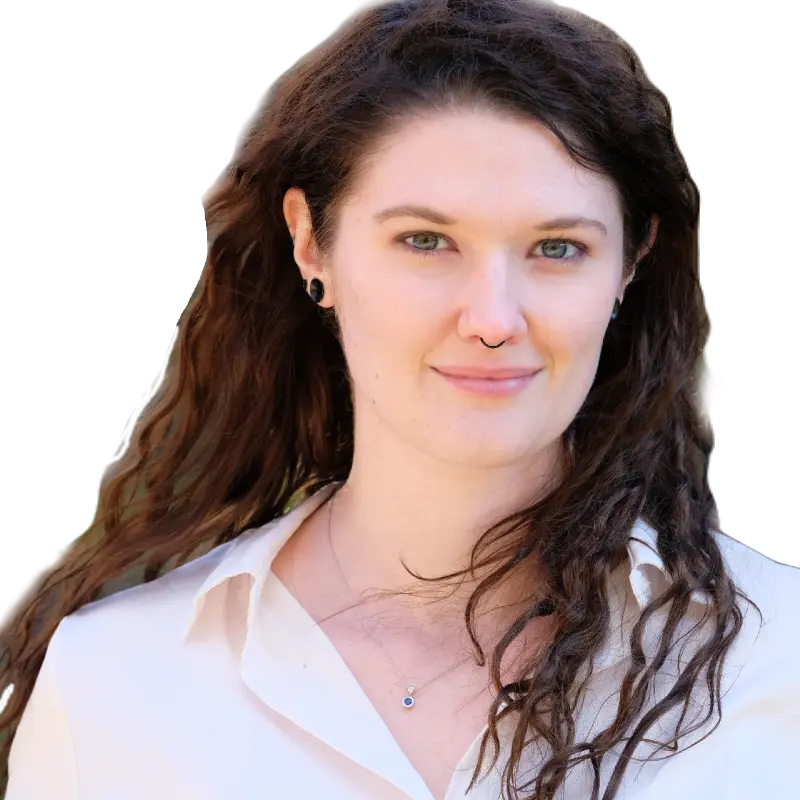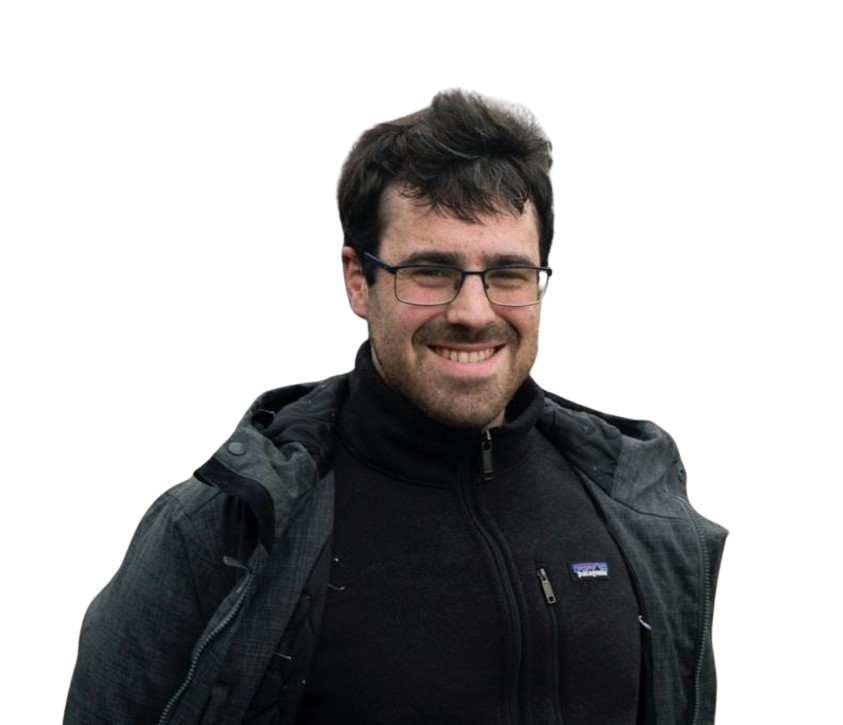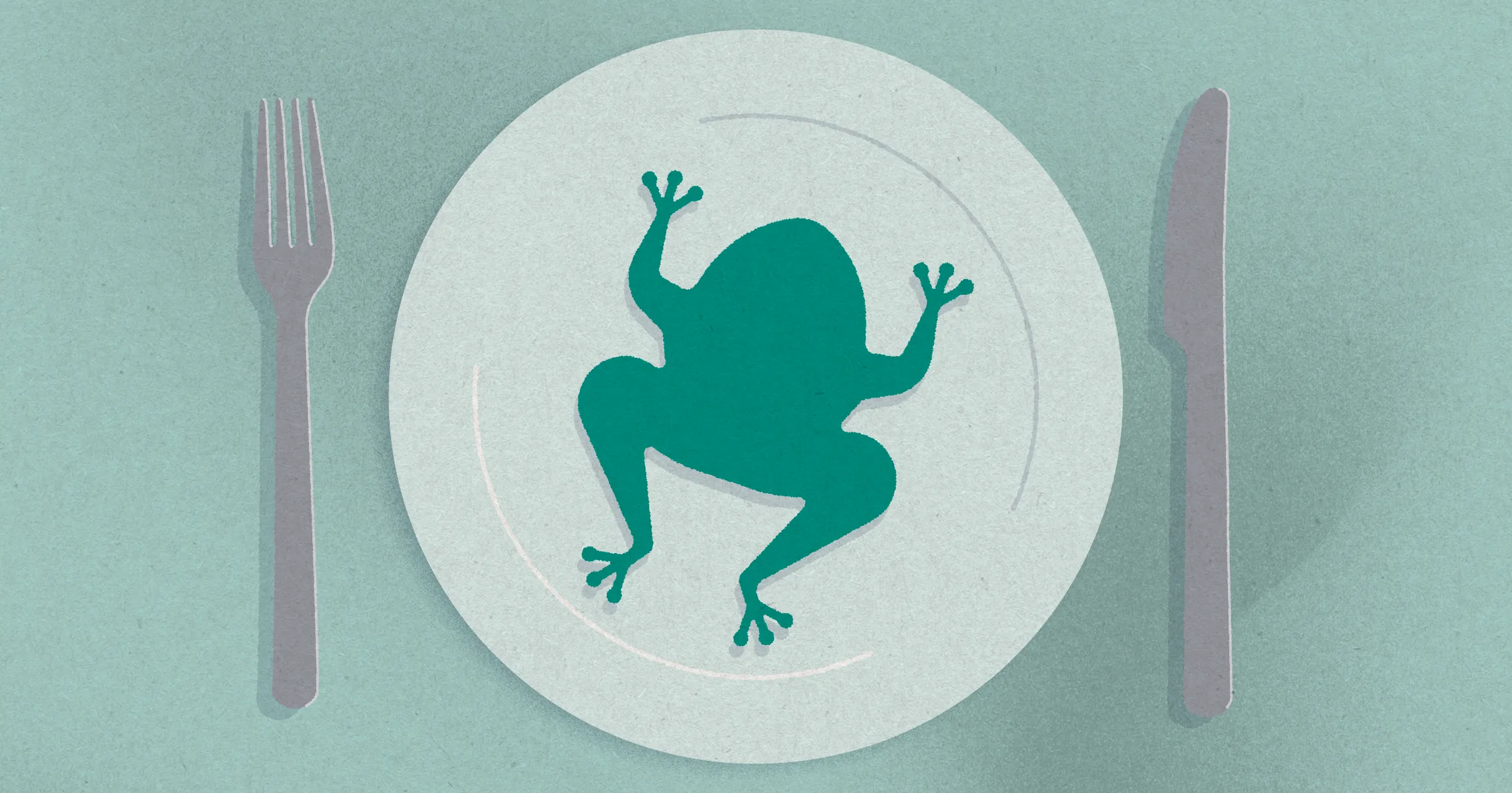
How to Teach Your Team Task Prioritization Methods that Stick
We hear it all the time. If you prioritize properly, you won’t have as much wasted time and effort.
And that’s all very well and good. But given that most work is, generally, something of an extended group project, it can be very challenging to have your own prioritization alone make a meaningful difference in your workflows.
If you want task prioritization methods to work, you need to get your full team on board. And to do that, you need to teach them about these methods in a way that sticks, rather than just taking them through the techniques live. You want to encourage the team to adopt these methods and use them on their own.
Team-wide adoption of task prioritization methods has been shown to reduce burnout, improve efficiency, and lower overall team stress. Teams that handle their own prioritization individually spend less time fixing problems and rushing to complete important work, leading to generally better performance.
This guide breaks down common agile prioritization methods into extremely easy to follow processes so that you can teach them to your team. Consider bookmarking this page and sending it as a reference guide for team members to use.
Task prioritization is all about aligning your team. Visor is a project portfolio management tool that enables teams to see the complete picture of what they’re working on at a glance. Looking to get your team into crystal clear alignment? Try Visor for free.
What are the best tools for task prioritization?
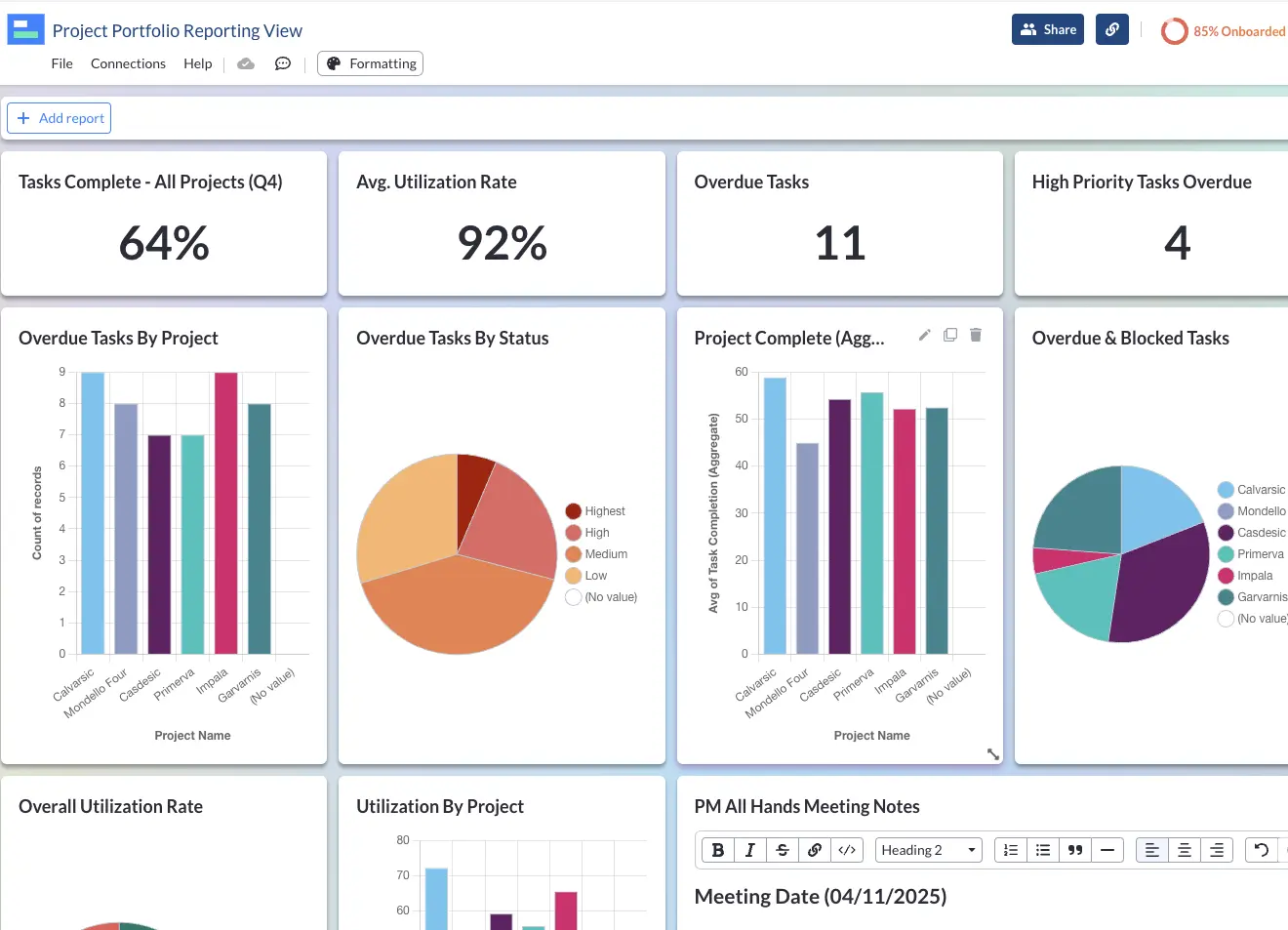
General Task Prioritization
Before you think about specific methodologies, you need to think about task prioritization in general. If you ask a given person what it is, they’ll probably say something like, “Task prioritization is the process of sorting your to-do list from most to least important.” And that’s correct, but it’s simplistic.
While most of the following methods do boil down to putting tasks in order, they help provide a framework for doing so. This framework lowers confusion, making it easier to start the process and stick with it even when it’s tricky to intuitively rank a task.
Fundamentally, to start all of these processes, compile a list of everything you need to get done. Maybe just for one project, maybe for your week, maybe for several projects. Be ready to think about deadlines, time expenditures, effort level, and your overall bandwidth.
Once you (or whoever you’re teaching) has those things, you’ll be ready to apply any of the following methodologies.
Priority Matrix
A priority matrix, also called an Eisenhower Matrix, is a way to visualize your task list in terms of both time and value.
Use it when you have a lot to do, with some tasks being more mission-critical than others, and when you know known deadlines (at least roughly).
The process:
- Draw a grid. You can use a physical tool, like paper or a whiteboard, or an online tool like Miro or even Figma.
- Label the grid according to the illustration below. You should have the top labeled Urgent and Not Urgent, while the side is labeled as Important and Unimportant.
- Think of each box as a quadrant, I-IV, in clockwise order.
- Start inputting tasks according to their importance and urgency. Think of things that are due soon (or even past due) as more urgent. Think of importance as how valuable this task is to the project.
- Try to sort the items within each box even more, if possible, with the top being the most crucial.
- Prioritize box I first – these tasks are both urgent and important. Box III tasks should be handled quickly so that you can hit deadlines and spend more time on box II items. De-prioritize box IV – these tasks are more likely to be time-wasters.
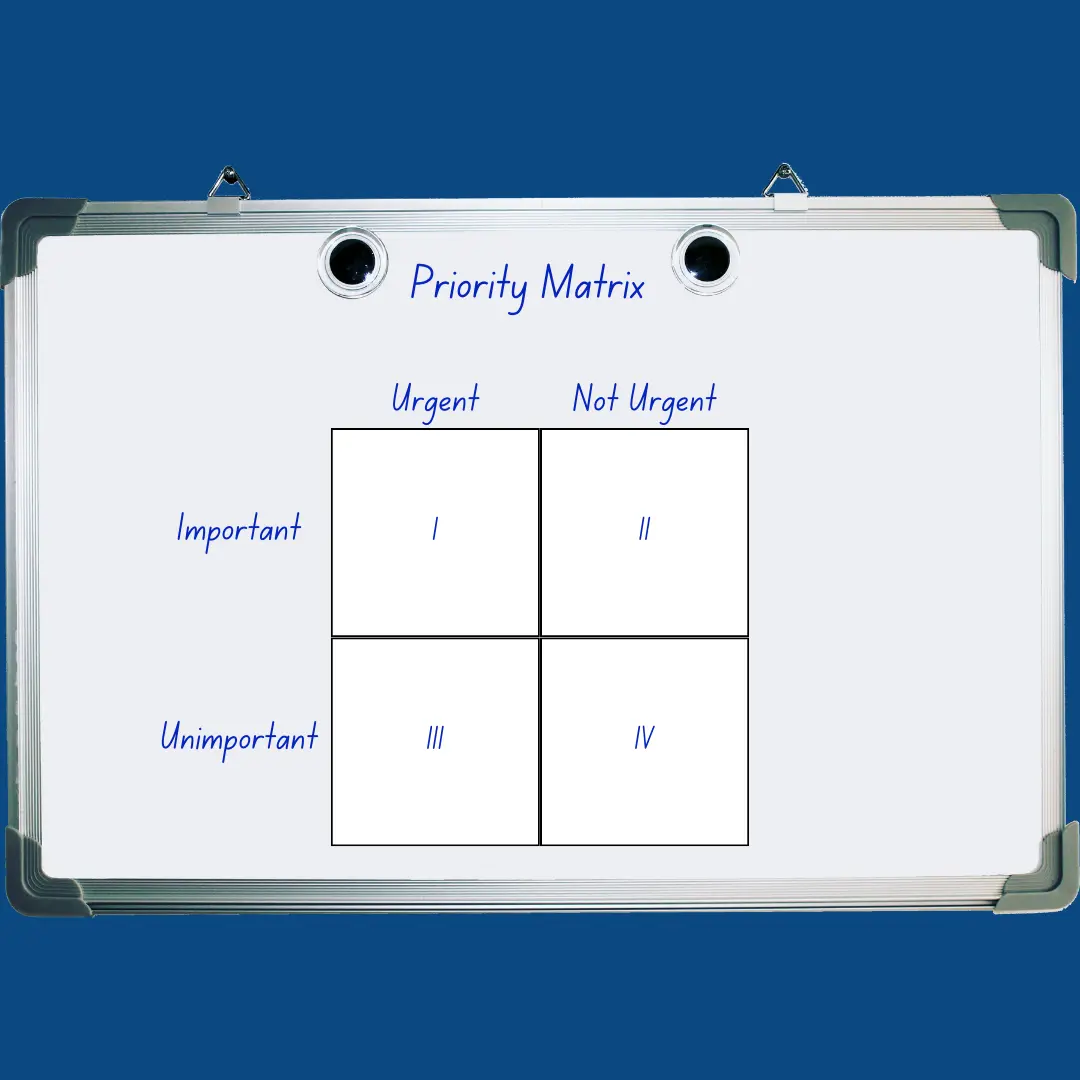
You can vary this matrix by swapping out the labels for ones that make more sense for a given situation. You might change urgency for difficulty, for instance, to help you spot where you’re most likely to need to spend more time.
MIT
MIT stands for Most Important Tasks, and it’s a brutally-efficient way to prioritize only the most critical of tasks.
Use it when you have lots to do, but your most valuable tasks are clear to you. This is a fabulous method to incorporate into your daily workflow.
The process:
- Write down your biggest goal. Maybe for a project, maybe for the day or week.
- Gather a list of everything you need to get done. Sometimes for a full project, but usually for a day or a week.
- Spot the three most important tasks for you to complete from that list. Write them down.
- Ensure that at least one of those tasks relates directly to the completion of your goal.
- Everything else on your list becomes a “nice to have” item. Your job is to complete your MITs over everything else.
Because this is such a useful tool, consider starting or ending your day with it. I personally use this method at the end of each day when I’m planning for the next.
MoSCoW
MoSCoW stands for Must-have, Should have, Could have, Won’t have. It’s a prioritization method that’s used to determine what’s most important, what’s ideal but not necessary, what’s nice to have, and what’s not needed.
This is the best fit method for prioritizing product features, design elements, and scope requirements.
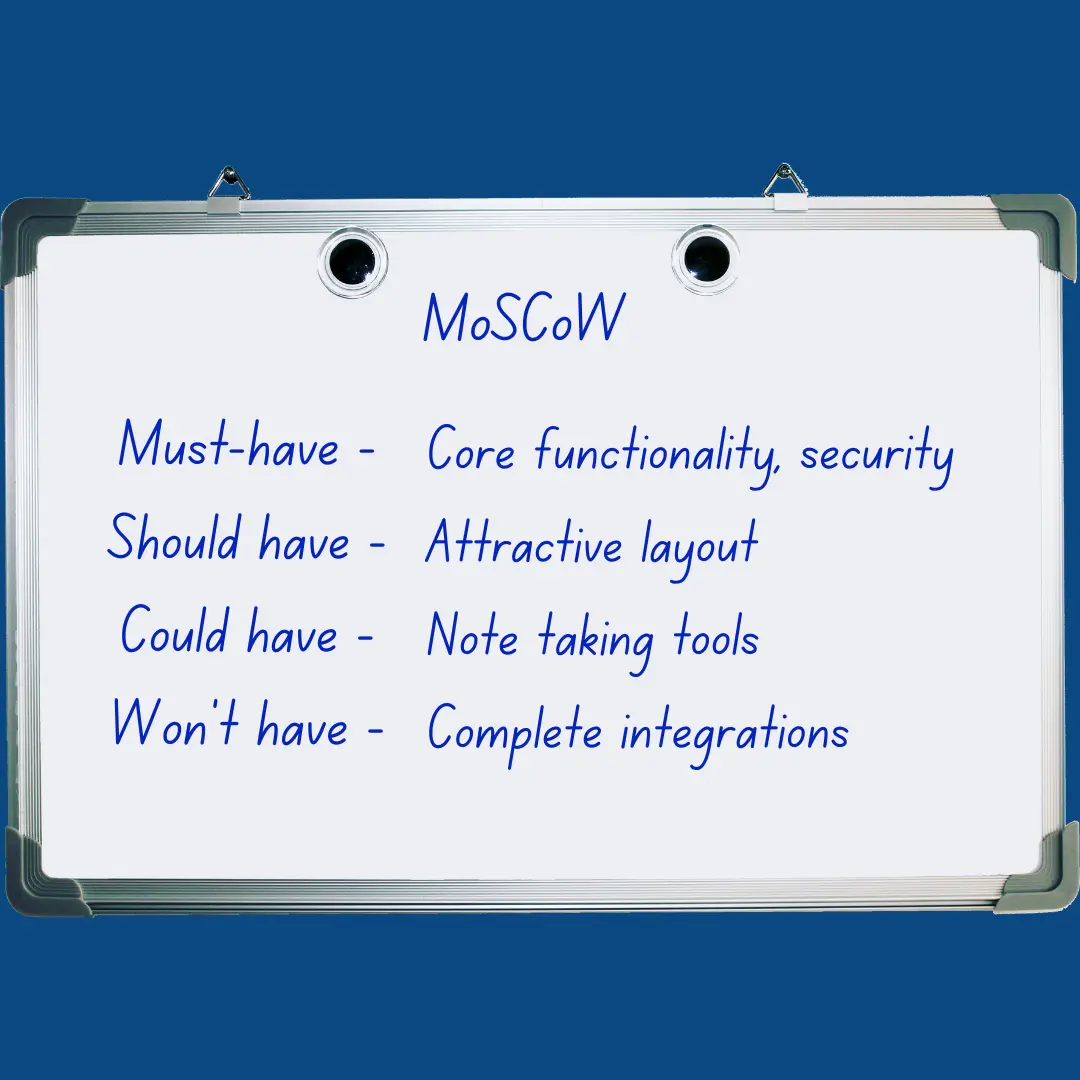
The process:
- Note down every single possible feature, element, or requirement you could conceivable fit within scope. It’s alright to have some obvious requirements as well as some “dream” elements, as that can help you get started more easily on rankings.
- Make a list. You can use a physical tool, like paper or a whiteboard, or an online tool like Miro or Google Docs. The list should say:
- Must-have
- Should have
- Could have
- Won’t have
- Sort each feature into those headings. Start with the most obviously important elements. These are the core functionalities that the product cannot exist without. Then move onto the “pie-in-the-sky” features you’re positive you won’t be able to include in the initial scope.
- Use those two extremes as a measuring tool to help you norm the “middling” features into the final two categories.
- When work begins, you’ll move down the list, starting with those top, must-have features and working towards less critical ones.
The MoSCoW method is one of a family of prioritization strategies that work in roughly the same way. ABCDE and Walking Skeleton systems, for instance, are very similar. Go with the system that feels most salient to you and your team.
Pareto
In the 1900s, an Italian Economist named Vilfredo Pareto determined that 80% of land was owned by 20% of the population. The original idea is that many things in life are not distributed evenly. This idea has now been adopted by and applied to a wide array of different situations.
In agile methodologies, the Pareto Principle states that 80% of value comes from 20% of your work. It’s a staggering number, but keep in mind that it’s an observation and not a hard and fast rule. Nonetheless, it can be a great way to pull back from the details and see tasks for the impact they’re likely to have on an end result.
This is a useful technique to layer with other task prioritization methods. When you’re struggling to figure out your Quadrant I or Must-have tasks, apply Pareto to the situation and try to identify which tasks will have the biggest positive impact.
The process:
- Note everything that needs to be done.
- Think of yourself as the end user or as your client. Which things from your list jump out at you as being the most important to you? Note all of them.
- Now imagine that you can only do some of these tasks. Which ones would be the first to go? Rank them at the bottom.
- Work upwards, imagining that you are able to complete less and less of these tasks. Which ones would have the biggest impact for the end user?
- What if you could only do five?
- What if you could only do three?
- What if you could only do two?
- What if you could only do one?
- Use this ranked list to find the most impactful items and prioritize them accordingly.
You can vary this technique to help prioritize anything from tasks to features. Think of which 20% of features will provide users or clients with 80% of value, then rank those as your highest priority, and so on.
You can use this method to formulate roadmaps, by ranking the most important items of work higher or pushing them sooner in a timeline.
A timeline in Visor
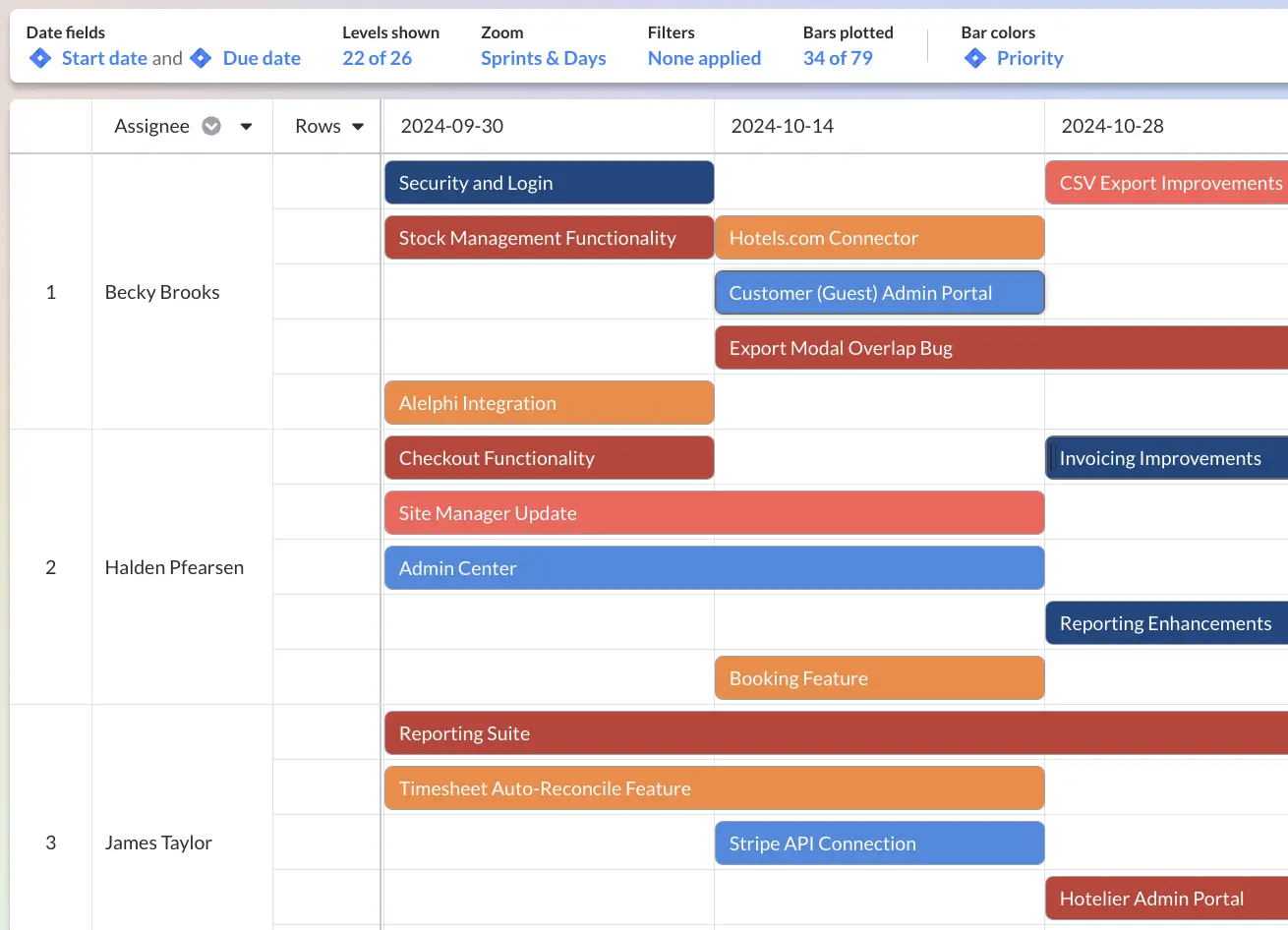
Eat the Frog
We’ve saved this one for last, as it’s the most clear-cut and easiest task prioritization method to adopt… at least in theory.
Mark Twain famously said, “If it’s your job to eat a frog, it’s best to do it first thing in the morning.” The idea is that, if you need to complete an unpleasant task, it’s better to get it out of the way right away, rather than to put it off and stress out about it all day.
The quote goes on, too! Twain said, “And if it’s your job to eat two frogs, it’s best to eat the biggest one first.” Sometimes there’s more than one frog – so figure out which frog is the worst one, so at least the second won’t seem so bad in comparison.
Use it when you know exactly what needs to be done first, but you’re turning to task prioritization methods as a way to try and do something, anything else, first.
The process:
- Look at your task list and find the two biggest, gnarliest, most important things to do. These may be the most difficult or stressful items to do, or they may not be. Think of the importance above all.
- Write down those two things, starting with the bigger or more important of the two.
- These two things are now your entire job. Focus on getting them done before you do anything else.
- Everything else is a nice-to-have, so you can prioritize all follow-up tasks using any other method you want.
This method is much easier taught than followed. It’s not called eating the frog because it’s super fun to do! Think of this as a great opportunity to lead by example.
One good way to incorporate this task prioritization method into your workflow is to use a kanban board. Add a specific column for “The Frog” in your board, then place high-priority, high-effort tasks in that row. Make sure your team doesn’t start on anything else until the “frogs” are all cleared.
A kanban board featuring “eat the frog” task prioritization
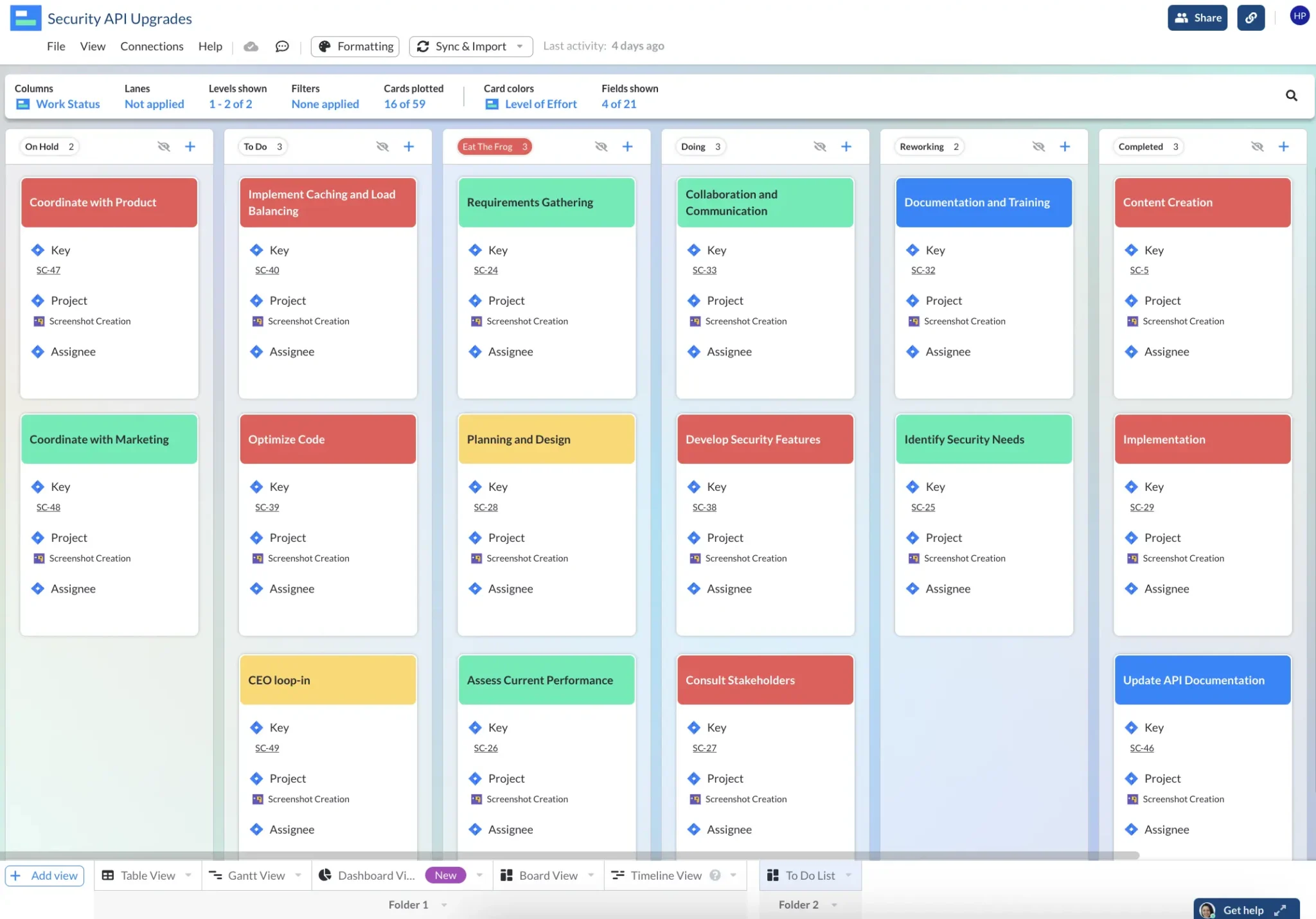
Time to start teaching task prioritization to your team!
Hopefully this guide can help you make task prioritization exercises into lessons that not only stick for your team, but encourage them to use these tools all on their own. Maybe you understand your own task prioritization a little better too? (Don’t worry, we won’t tell anybody.)
If you’re looking for new ways to get your team into crystal clear alignment, try Visor. Visor is a project portfolio management system that integrates with tools like Asana and Jira to help you manage all your projects from the most granular detail to the most zoomed-out view. And you can share your projects with stakeholders and team members at any level. You can try Visor, for free, right now.
Visor offers a ton of templates that can help your team prioritize and plan projects. Explore our library of templates or start off with something simple like a Gantt chart template.

